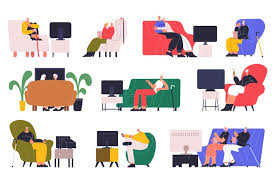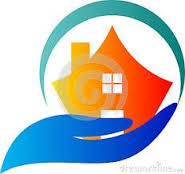Older adults can save tens of thousands of dollars annually by choosing assisted living communities over aging in place in their homes.
Unlike point solutions, Inspiren unifies resident safety, care planning, staffing, and emergency response into a single AI-powered platform.
An artificial intelligence-powered virtual assistant platform for senior living and care providers.
Betting that AI could lighten the clinician load.

 The rise of AgeTech – it is a trend. It’s easy to say, and
The rise of AgeTech – it is a trend. It’s easy to say, and  Voice technology in 2022 – living up to hope and hype? By 2018, it seemed possible that Voice First technology (and its associated AI software) could transform the technology user experience for older adults (see report:
Voice technology in 2022 – living up to hope and hype? By 2018, it seemed possible that Voice First technology (and its associated AI software) could transform the technology user experience for older adults (see report:  Perhaps you have seen the scary Apple Watch ad about 911 calls. If not, here it is, short but
Perhaps you have seen the scary Apple Watch ad about 911 calls. If not, here it is, short but  In the time of CES 2022 – advice to tech firms about older adults.
In the time of CES 2022 – advice to tech firms about older adults.  For older adults, television is a solid rock in an ever-shifting technology landscape. Approximately
For older adults, television is a solid rock in an ever-shifting technology landscape. Approximately  Older adults benefit from voice-AI enabled innovation and deployment. And it looks like they will continue to benefit in 2022 and beyond. For one thing, at least
Older adults benefit from voice-AI enabled innovation and deployment. And it looks like they will continue to benefit in 2022 and beyond. For one thing, at least  Family caregivers cannot provide enough care for a growing population of the 80+. You may remember.
Family caregivers cannot provide enough care for a growing population of the 80+. You may remember.  As 2022 begins, the oldest baby boomer turns 76. As the population aged 65+ exceed 54 million, trends emerge. Because of the sheer size of the older adult market, and the wealth of baby boomers, vendors increasingly see them as constituents for new offerings. The pace of innovation is accelerating, driven by older adult changing needs, shortage of care workers, investor interest and of course. Considering the recent
As 2022 begins, the oldest baby boomer turns 76. As the population aged 65+ exceed 54 million, trends emerge. Because of the sheer size of the older adult market, and the wealth of baby boomers, vendors increasingly see them as constituents for new offerings. The pace of innovation is accelerating, driven by older adult changing needs, shortage of care workers, investor interest and of course. Considering the recent  CES 2022 – smaller in size, but big in tech futures.
CES 2022 – smaller in size, but big in tech futures.  This week is CES 2022 -- new and current entrants seek markets and partnerships. Perhaps you aren't paying attention -- but once per year, innovations from around the world are presented at CES for comment, media attention, and most of all, seeking interest about what's new (or even just envisioned). This year it is a hybrid event -- with some folks in person, some watching online and others lurking among the press releases. Next week's blog post will detail 10 products/services from CES 2022 that will likely make a difference for older adults. But this week, here is advice for startups and new entrants when thinking about reaching an older adult audience. It is extracted from the Technology for Aging 2022 Market Overview, to be posted following CES, and including 30 offerings that were not in the 2021 version. The advice:
This week is CES 2022 -- new and current entrants seek markets and partnerships. Perhaps you aren't paying attention -- but once per year, innovations from around the world are presented at CES for comment, media attention, and most of all, seeking interest about what's new (or even just envisioned). This year it is a hybrid event -- with some folks in person, some watching online and others lurking among the press releases. Next week's blog post will detail 10 products/services from CES 2022 that will likely make a difference for older adults. But this week, here is advice for startups and new entrants when thinking about reaching an older adult audience. It is extracted from the Technology for Aging 2022 Market Overview, to be posted following CES, and including 30 offerings that were not in the 2021 version. The advice: